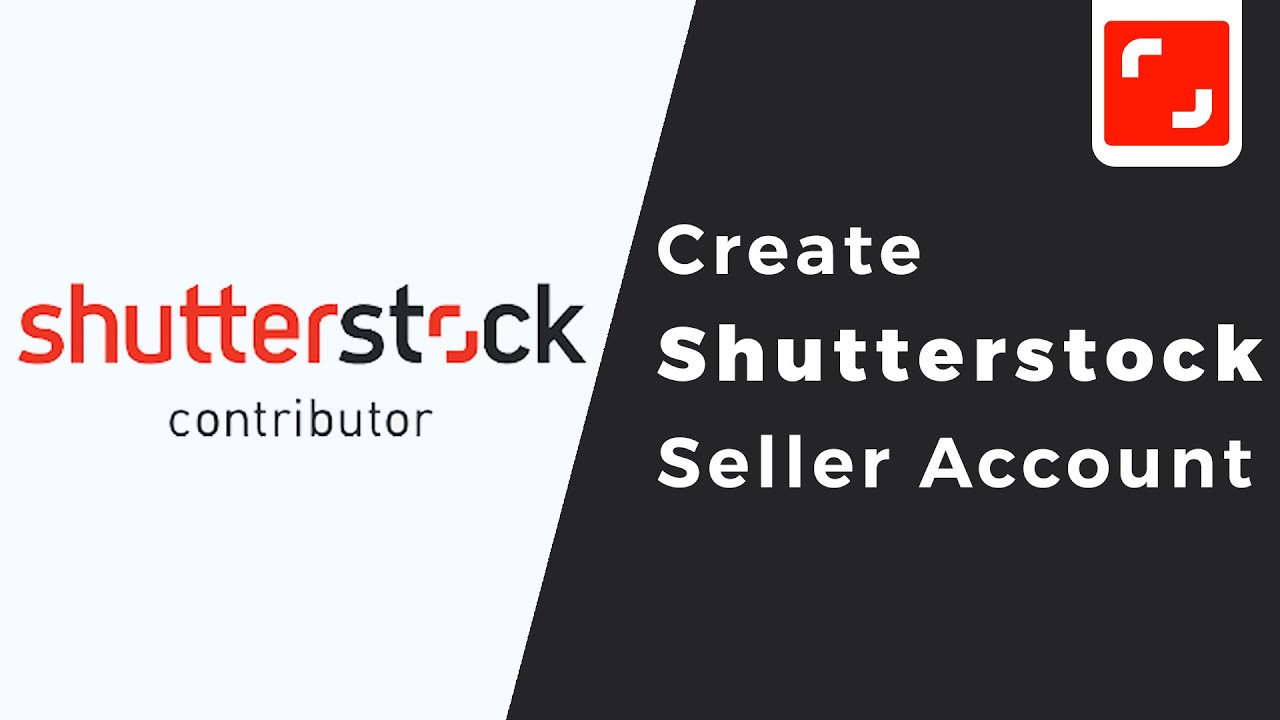Thinking about turning your creative talents into a source of income? Selling your images, videos, and illustrations on Shutterstock can be a fantastic way to do just that. As of 2025, the platform continues to be a go-to marketplace for artists and photographers worldwide. Whether you’re a seasoned professional or just starting out, understanding how to successfully become a Shutterstock contributor is key. In this guide, we’ll walk you through what you need to know to get started and thrive on
Understanding Shutterstock’s Requirements for Sellers

Before you start uploading your work, it’s important to understand what Shutterstock expects from its contributors. This ensures your submissions meet their standards and increases your chances of approval and sales. Here’s a breakdown of the main requirements:
- High-Quality Content: Shutterstock values images, videos, and illustrations that are sharp, well-exposed, and free of noise or distractions. Your work should look professional and polished.
- Originality and Copyright: All submissions must be your own work, and you must have the rights to distribute them. Plagiarized or copyrighted material from other sources is strictly prohibited and can lead to account suspension.
- Technical Specifications: Each type of media has specific technical requirements:
- Photos: JPEG format, sRGB color space, minimum of 4 MP resolution.
- Videos: MOV or MP4 formats, minimum of 1920×1080 resolution, H.264 codec preferred.
- Illustrations: Vector files (AI, EPS) or high-resolution PNG files.
- Model and Property Releases: If your content features recognizable people, private property, or trademarks, you need appropriate releases to sell those images legally.
- Content Guidelines: Shutterstock prefers images with commercial appeal—think clean, versatile, and relevant. Avoid overly branded, explicit, or controversial content.
Getting familiar with these requirements before you start uploading will save you time and frustration. Take the time to review Shutterstock’s detailed contributor guidelines online—they’re there to help you succeed and ensure your work fits the platform’s standards. Remember, high-quality, original content that adheres to their rules has a much better chance of being accepted and earning you income in 2025 and beyond!
Creating a High-Quality Portfolio of Images and Videos

So, you want to become a successful Shutterstock seller? Great choice! But before you start uploading, it’s crucial to build a compelling portfolio that catches the eye of buyers. Think of your portfolio as your digital storefront—first impressions matter, and quality always trumps quantity.
First things first: focus on creating high-resolution images and videos. Shutterstock’s standards are pretty strict—they prefer crisp, sharp, well-exposed media. Make sure your photos are well-lit, properly composed, and free of noise or distractions. For videos, ensure smooth footage with good lighting and clear audio if applicable.
Next, diversify your portfolio. Shutterstock buyers look for a variety of content, so consider covering different themes, styles, and subjects. For instance, if you’re into nature photography, include landscapes, close-ups, and wildlife. If you shoot videos, think about capturing diverse scenes like urban life, lifestyle, or product demonstrations.
Here are some tips to keep in mind:
- Follow Trends: Keep an eye on what’s popular—minimalist designs, authentic lifestyle shots, or relevant topics like sustainability. Incorporate trending themes into your portfolio to increase visibility.
- Maintain Consistency: Develop a recognizable style or niche. Consistency helps your portfolio stand out and attracts repeat buyers.
- Optimize Metadata: Use descriptive, keyword-rich titles and tags. Accurate metadata makes your content discoverable in search results.
- Review and Edit: Always review your images and videos before uploading. Remove any that are slightly off-focus or have technical issues. Quality control is key!
Lastly, keep updating your portfolio regularly. Upload new content consistently to stay relevant and increase your chances of being featured. Remember, a diverse and high-quality portfolio not only attracts buyers but also boosts your reputation as a credible contributor.
Step-by-Step Guide to Registering as a Shutterstock Contributor

Ready to take the plunge? Registering as a Shutterstock contributor is straightforward, but knowing the steps can make the process smoother. Let’s walk through it together so you can start showcasing your work in 2025!
Step 1: Visit the Shutterstock Contributor Website
Head over to https://submit.shutterstock.com. This is the hub for all contributor registrations and uploads. Take a moment to explore the site and familiarize yourself with the guidelines and FAQs.
Step 2: Click on “Sign Up” or “Register”
You’ll find the registration button prominently displayed. You can sign up using your email address or log in via social media accounts like Google or Facebook for quicker access.
Step 3: Fill Out Your Personal Details
Provide accurate information, including your full name, email address, and a secure password. Make sure your email is active because Shutterstock will send you confirmation and updates.
Step 4: Agree to the Contributor Agreement
Read the terms carefully. This agreement covers licensing, rights, and your responsibilities as a contributor. If everything looks good, accept the terms and proceed.
Step 5: Complete Your Profile
Upload a professional profile picture and add a bio if you like. This helps build trust with potential buyers and Shutterstock’s team.
Step 6: Submit Your First Content
Before you can start earning, Shutterstock needs to review your submissions. Upload a few samples of your best work—high-quality images and videos that meet their technical standards.
Step 7: Wait for Approval
The review process typically takes a few days. Shutterstock’s team will assess your submissions for quality, originality, and compliance with their guidelines. If approved, you’ll receive an email notification, and your content will go live.
Pro Tips:
- Read the Contributor Guidelines thoroughly. Understanding what’s expected can save you time and frustration.
- Prepare Your Content in advance—ensure all media are properly edited, keyworded, and ready for upload.
- Be Patient. The approval process can sometimes take a few days, especially if your first submissions are under review.
And that’s it! Once you’re approved, you’ll be able to upload more content, track your sales, and start earning from your creativity. So, gather your best shots, follow these steps, and welcome to the exciting world of Shutterstock contributing in 2025!
Tips for Optimizing Your Content for Better Visibility
Creating amazing images and videos is just the first step. If you want your work to be seen by more people, optimizing your content for Shutterstock’s search system is key. Think of it like setting up your store window — you want it to be attractive and easy to find!
Here are some practical tips to boost your content’s visibility:
- Use Relevant Keywords: When uploading your files, include descriptive and specific keywords that accurately reflect what’s in your work. Think about what a buyer would search for. For example, instead of just “flower,” try “pink cherry blossom tree” or “springtime floral arrangement.”
- Write Clear and Concise Titles: Your title should be straightforward but informative. Instead of vague titles like “Beautiful Image,” go for something like “Sunset over Mountain Range with Vibrant Colors.”
- Craft Detailed Descriptions: Use the description box to add more context about your work. Mention the mood, setting, or any unique features. This helps Shutterstock’s algorithm understand and categorize your content better.
- Choose the Right Categories: Properly categorize your files so they show up in the right searches. Take your time to select the most appropriate categories and subcategories.
- Tag with Variations: Include synonyms and related terms. For example, if your image features a “coffee cup,” also add tags like “morning beverage,” “breakfast,” or “hot drink.”
- Maintain Consistency: Regularly upload high-quality content. Shutterstock favors active contributors who keep their portfolios fresh and diverse.
Don’t forget to review your keywords and descriptions after a few weeks. See what’s working and refine them to improve your content’s discoverability. Remember, optimizing isn’t a one-time thing — it’s an ongoing process that can really pay off in increased views and sales!
Best Practices for Pricing and Licensing Your Work
Setting the right price and choosing the appropriate license for your work might seem tricky, but it’s really about understanding your goals and what buyers need. Getting this right can make a big difference in how much you earn and how your work is used.
Here’s what you should keep in mind:
Understanding Licensing Options
| License Type | What It Means | Best For |
|---|---|---|
| Standard License | Allows basic usage like websites, social media, and print up to 500,000 copies. | Most common; suitable for general commercial use. |
| Extended License | Permits unlimited copies, merchandise, or use in products for resale. | When clients want to produce items like t-shirts, posters, or large campaigns. |
Pricing Strategies
Shutterstock recommends pricing based on the quality and uniqueness of your content. Here are some tips:
- Research the Market: Look at similar images or videos and see what prices they are listed for. This gives you a ballpark figure.
- Start Competitive: Especially when beginning, price your work competitively to attract buyers and build your portfolio.
- Use Shutterstock’s Suggested Pricing: They offer guidelines to help you set reasonable prices based on your content type.
- Consider Your Effort and Value: If your work is highly unique or complex, you can price it higher. Don’t undervalue your effort!
Additional Tips
- Avoid Undervaluing Your Work: It might be tempting to price low, but this can devalue your portfolio and reduce earnings in the long run.
- Offer Variety: Different types of content and price points can attract a broader range of buyers.
- Update Pricing as You Grow: As your portfolio and reputation improve, revisit your prices and licensing options.
In the end, finding the right balance between pricing and licensing is about understanding your work’s worth and the needs of your clients. Be flexible, stay informed about market trends, and don’t be afraid to experiment a little until you find what works best for you. Happy selling!
Promoting Your Shutterstock Portfolio to Increase Sales
Once you’ve uploaded your stunning images and built a solid portfolio on Shutterstock, the next step is making sure people see your work. Promotion is key to increasing your sales and standing out in a crowded marketplace. But don’t worry—promoting your portfolio doesn’t have to be complicated or expensive. There are plenty of simple, effective strategies you can use to get more eyes on your images.
Start with social media. Platforms like Instagram, Twitter, Facebook, and LinkedIn are great for sharing your visuals. Create dedicated accounts or pages for your photography and design work. Use relevant hashtags like stockphotography, shutterstock, or niche-specific tags to connect with audiences interested in your style. Engage with followers by commenting, sharing behind-the-scenes stories, and showcasing new uploads. The more active you are, the more likely people are to check out your portfolio.
Leverage blogging and content creation. Writing blog posts or articles related to your niche can help attract visitors who are searching for specific visuals. For example, if you specialize in travel photos, write about travel tips or destination guides and include your images as examples. Share these posts on your social media channels to drive traffic back to your portfolio.
Participate in online communities and forums. Join groups on platforms like Reddit, Facebook, or niche-specific forums where your target audience hangs out. Share your work when appropriate, answer questions, and contribute valuable insights. Over time, this builds your reputation and can lead to more exposure and sales.
Collaborate with other creators or brands. Partnering with bloggers, designers, or small businesses can open new avenues for exposure. Offer to provide images for their projects or guest blog on each other’s platforms. This cross-promotion helps broaden your reach beyond just Shutterstock visitors.
Remember, consistency is key. Regularly updating your portfolio with fresh content and actively promoting your work will increase your chances of making sales. Keep an eye on which images perform best, and consider creating more content in those areas. Over time, your promotional efforts will turn into a steady stream of visitors and, ultimately, sales.
Common Challenges and How to Overcome Them
Getting started as a Shutterstock seller is exciting, but it’s not without its hurdles. Many new contributors face challenges like standing out from the crowd, dealing with slow sales, or navigating copyright concerns. The good news is, with a bit of perseverance and strategic thinking, you can overcome these obstacles and succeed in your stock photography journey.
Challenge 1: Competition is fierce. Shutterstock hosts millions of images, so making your work stand out can feel overwhelming. To tackle this, focus on finding a niche or unique style that sets you apart. Study popular images and identify gaps you can fill. Quality always beats quantity, so prioritize creating high-resolution, well-composed images that appeal to buyers.
Challenge 2: Slow sales in the beginning. It’s common for new contributors to see limited income initially. Don’t get discouraged. Keep uploading consistently, optimize your keywords, and promote your portfolio. Over time, as your collection grows and your images gain visibility, sales tend to increase.
Challenge 3: Copyright and model releases. Ensuring all your images comply with Shutterstock’s licensing requirements is crucial. Always obtain model releases when featuring recognizable people, and be mindful of intellectual property rights for locations or branded products. When in doubt, consult Shutterstock’s contributor guidelines or legal resources. This not only protects you but also builds trust with buyers.
Challenge 4: Staying motivated and consistent. Stock photography can sometimes feel like a slow grind. Set realistic goals, celebrate small wins, and remember why you started. Creating a schedule for regular uploads and promotion can help maintain momentum.
In essence, every challenge you face is an opportunity to learn and improve. Keep experimenting, stay patient, and adapt your strategies. Success on Shutterstock isn’t just about one viral shot—it’s about persistence and continuous growth. With time and effort, you’ll find your groove and enjoy a rewarding experience as a stock contributor in 2025 and beyond.
Staying Updated with Shutterstock Policies and Trends in 2025
As a Shutterstock contributor, one of the biggest keys to long-term success is staying in the loop with the latest policies, guidelines, and industry trends. The digital marketplace is always evolving, and Shutterstock is no exception. In 2025, the platform continues to refine its standards to ensure high-quality content and a positive user experience, so it’s crucial that you stay informed and adaptable.
First off, regularly check Shutterstock’s Contributor Guidelines. These outline what kind of content is acceptable, submission standards, licensing updates, and any changes to image or video quality requirements. Shutterstock often updates these to reflect new trends, legal considerations, or technological improvements, so make it a habit to review them at least once a month.
Next, keep an eye on the Shutterstock Contributor Blog and community forums. These are gold mines for updates, tips, and discussions about what’s popular or what’s shifting in the marketplace. For instance, in 2025, there’s a growing demand for:
- Sustainable and eco-friendly imagery
- Diverse and inclusive representation
- Content related to remote work and digital technology
By aligning your portfolio with these trends, you increase your chances of making sales. Additionally, Shutterstock sometimes runs webinars or workshops for contributors, which can be incredibly helpful for understanding platform updates or improving your content quality.
Another tip is to monitor your analytics. Check which types of your content are performing well and see if there are emerging niches or styles you could explore. This real-time feedback helps you pivot and create content that’s more likely to sell in 2025 and beyond.
Finally, stay legally compliant. Copyright laws and licensing policies can change, especially as new technologies like AI-generated content become more prevalent. Make sure your submissions adhere to the latest legal standards to avoid issues that could restrict your account or sales.
In essence, being proactive about staying updated isn’t just about following rules—it’s about positioning yourself ahead of the curve. When you’re aware of trends and policy shifts, you can adapt quickly and keep your portfolio relevant, making 2025 a successful year for your Shutterstock journey.
Conclusion and Final Tips for Successful Selling on Shutterstock in 2025
Congratulations! You’ve now got a clear roadmap on how to become a successful Shutterstock seller in 2025. While the platform offers a fantastic opportunity to turn your creativity into income, it’s also a competitive space that rewards dedication, quality, and adaptability.
To wrap things up, here are some final tips to help you thrive:
- Focus on quality over quantity. Upload high-resolution, well-composed, and unique content. Remember, buyers look for standout images and videos that meet their needs.
- Understand your audience and niche. Whether it’s business, lifestyle, technology, or nature, specializing can help you become an expert in a specific area, increasing your sales potential.
- Stay consistent and patient. Building a solid portfolio takes time. Keep uploading regularly and don’t get discouraged by slow periods.
- Optimize your keywords and descriptions. Use relevant, specific tags and clear descriptions to make your content discoverable in searches.
- Engage with the community and stay informed. Join forums, webinars, and read updates frequently. Networking can also open doors to collaborations or new ideas.
- Learn from your analytics. Monitor which content performs best and adapt your future uploads accordingly.
- Respect copyright and licensing standards. Ensure all your content complies with Shutterstock policies to avoid unnecessary complications.
- Embrace new trends and technologies. In 2025, this might include AI tools for editing or innovative content styles. Stay curious and open to experimentation.
Remember, becoming a successful Shutterstock seller isn’t just about uploading pretty pictures; it’s about understanding the platform, continuously improving your craft, and staying ahead of industry trends. Keep your passion alive, stay engaged, and the sales will follow. Here’s to a productive and profitable 2025!

